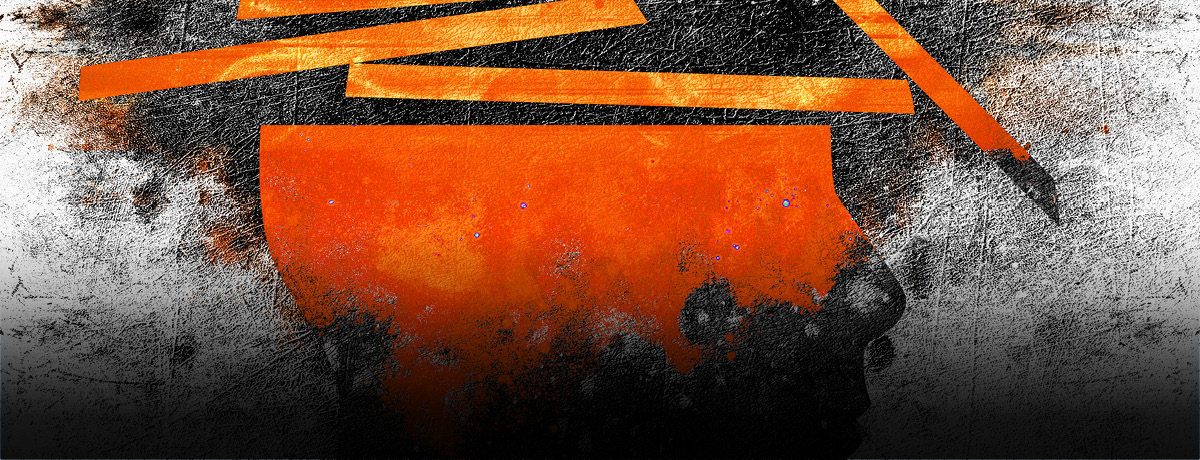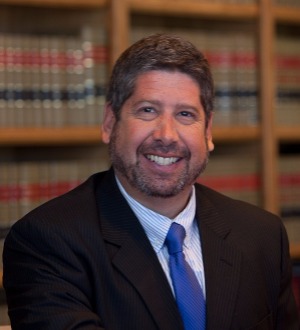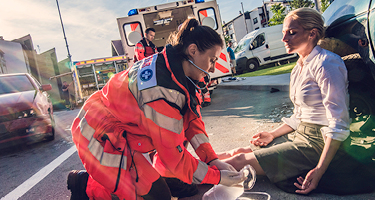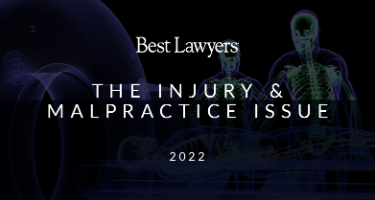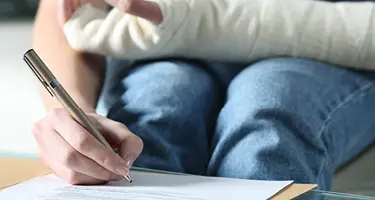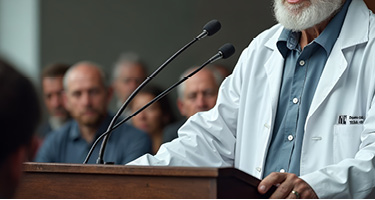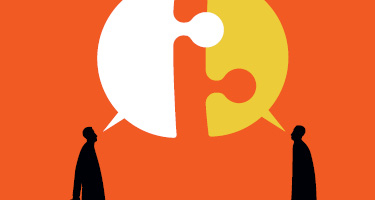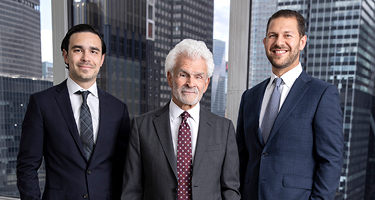ON MAY 17, 1991, a 30-year-old African American Navy veteran was riding his motorcycle on a residential street where he came upon a Cadillac which appeared to be parked alongside the curb. The car on his right suddenly veered in front of him attempting to make a U-turn, and he hit the Cadillac squarely on the driver’s door. Luckily, he was wearing a helmet; unluckily, it lacked a face shield, a protective device that was not common on motorcycle helmets at the time.
He couldn’t later remember if he lost consciousness, but he did lose track of time as he lay bleeding on the street. An ambulance took him to a hospital, where he was diagnosed with a dislocated shoulder and facial fractures, including orbital and mandibular fragmentation. After a surgeon reconstructed his face, he remained hospitalized for close to a week.
Litigation began about a year into his recovery because the insurance company for the driver of the Cadillac denied responsibility for the accident. Discovery commenced, and the victim’s lawyer—who was relatively inexperienced—was more concerned with the longstanding effects of his client’s facial fractures, which now included cranio-mandibular joint disease and double vision. The attorney couldn’t discern the telltale signs of a mild traumatic brain injury (mTBI). His client had trouble with balance, seemed forgetful, missed appointments and was periodically at a loss for words. To top it off, this now 31-year-old man was now suffering from major depression.
The case continued through discovery, and the defense compelled the victim to undergo a neuropsychological examination. His attorney requested that a psychologist accompany his client to the exam to monitor the testing and gauge whether it was done properly. The claimant’s retained psychologist reported back that a defense psychometrist did most of the testing and that both the psychometrist and the neuropsychologist made a number of mistakes.
Not until the attorney received the defense’s neuropsychological report did he recognize that his client had suffered a traumatic brain injury. The defense neuropsychologist indicated that any test result that was below average, including the victim’s IQ of 89, was due to his “socioeconomic background.” In other words, that figure was expected because he was African American.
At trial, the victim’s counsel deftly asked the neuropsychologist what he meant by “socioeconomic background.” After a rash of nonsensical responses, the attorney cut in: “Do you know what my client does for a living?”
“I think he works in a hospital in some capacity,” came the reply.
Said the attorney, “Would you expect a respiratory therapist at a hospital would have an IQ of 89?”
“It is possible but improbable.”
“Would you expect the teacher of the respiratory therapists at the hospital to have an IQ of 89?”
“Probably not.”
The victim’s counsel then asked the neuropsychologist if he had ever been a passenger on a plane. “Of course,” came the indignant reply.
“Would you expect the pilot to have had an IQ of 89?”
“Of course not!”
The victim’s attorney drove in the stake with the final question: “Were you aware my client was a Navy pilot before he became a respiratory therapist and then an instructor of respiratory therapists?” It was clear that the defense neuropsychologist had inadvertently proven to the jury that the victim had suffered a traumatic brain injury.
The jury, finding for the motorcyclist, provided substantial monetary damages, which the insurance carrier was compelled to pay. The victim was never able to work again, is still alive, still contends with chronic problems stemming from the brain injury and remains friends with his former attorney.
Traumatic brain injuries come in many varieties. Major to moderate injuries are easier to spot. Radiographs such as CTs (computerized tomography), MRIs (magnetic resonance imaging) or DTIs (diffusion tensor imaging) will usually catch disturbances. Within seconds to hours of the initial trauma, there may be a change in status in which the victim appears fine but then loses consciousness or exhibits stroke-like symptoms due to bleeding on the brain. The person may look normal but have problems with concentration, speech or myriad other tasks.
Mild traumatic brain injuries are more difficult to discern. In a vast number of cases, CT scans and MRIs do not pick up the highly subtle changes that can occur from a head injury involving shearing rotational forces. A head injury can occur whether the victim was wearing a helmet or not. Symptoms may also be subtle to the victim or loved ones: potential loss of consciousness or post-traumatic amnesia, slurred speech, loss of balance, personality changes, vertigo, tinnitus, headaches, visual disturbances, light sensitivity, difficulties with concentration or memory, problems with being organized, fatigue, insomnia, depression and anxiety.
The key is to get a baseline evaluation of the victim as early as possible to see how he does on the battery of neuropsychological tests. Even though the vast majority of mTBIs dissipate within six months, symptoms linger for a great number of victims. As such, it’s good to be retested at least once a year after the first neuropsychological tests. These tests have built-in validity scales such as the MMPI-2, which has four scales assessing the victim’s ability to take the test in an accurate manner so the practitioner can see if the victim is giving a full effort, and if the testing is valid.
The science of traumatic brain injuries has improved greatly since 1991. Studies by professional sports leagues, the military and the medical and scientific communities have shown that what was once thought to be just a minor concussion can in fact become a debilitating long-term injury. (The term “minor” is a medical classification and should not be used to indicate that the condition is small or inconsequential.)
Technological advances include improvements in radiographs—including MRIs, functional MRIs (fMRIs), DTIs and quantitative electroencephalograms (qEEGs)—and blood tests called “brain trauma indicators,” which may show certain elevated protein levels consistent with brain injuries. Mild traumatic brain injuries and chronic traumatic encephalopathy (CTE) were once provable only by autopsy, but scientific advances make them easier to demonstrate while the victim is alive, to help with progress and recovery—and to take steps, however fitful, toward a future in which these devastating ailments will no longer exact such a ruinous toll.
PAUL D. FRIEDMAN is the Managing Shareholder of the Arizona office of Burg Simpson Eldredge Hersh Jardine, PC. He is certified by the State Bar of Arizona Board of Specializations in Injury and Wrongful Death Litigation, certified in Civil Trial Practice and Civil Pretrial Practice Advocacy by the National Board of Trial Advocacy, certified as a Medical Malpractice Specialist by the American Board of Professional Liability Attorneys, and is an Associate with the American Board of Trial Advocates. He has been recognized as a Best Lawyer since 2016.
